The RC (Ritchey–Chrétien) telescope, a brainchild of George Ritchey and Henri Chrétien in 1910, stands as a specialized iteration within the Cassegrain optical system. Named after its inventors, this telescope design boasts a primary hyperbolic mirror and a secondary hyperbolic mirror, meticulously engineered to eradicate off-axis optical errors like coma. Notably, the RC Telescope distinguishes itself with its broader field of view and minimized optical aberrations compared to conventional reflecting telescopes. Its inherent elimination of chromatic aberration also positions it favorably against refracting telescopes. The majority of astronomical telescopes lean towards reflective designs owing to their capacity to capture a wide range of wavelengths, facilitated by metal coatings.
Reflective telescopes, spearheaded by Newton’s pioneering efforts with a spherical mirror, have a long history. However, the inherent spherical aberration in such mirrors, coupled with limitations in aperture size, imposes constraints on both focal ratios and image quality. While spherical mirrors offer rotational symmetry conducive to uniform image quality across the field of view, they are best suited for systems with modest aperture and quality demands. The spherical aberration issue prompted optical designers to explore innovations, giving rise to variants such as the Cassegrain system.
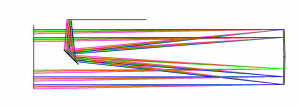
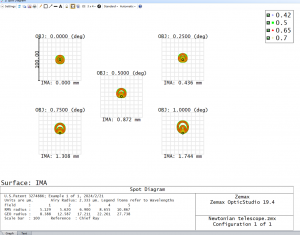
Addressing the spherical aberration challenge, optical designers devised strategies to enhance reflective telescopes, leading to the emergence of the Cassegrain system. This configuration, characterized by a primary concave mirror and a secondary convex mirror, compacted the telescope’s structure while broadening opportunities to refine image quality. However, the introduction of a secondary mirror incurred light loss, prompting careful consideration of the light-blocking coefficient to maintain energy efficiency and image fidelity.
Traditional Cassegrain telescopes typically adopt paraboloid mirrors for their primary reflective surfaces, ensuring optimal correction of spherical aberration. Yet, the singular axis of rotational symmetry in paraboloids poses challenges, particularly in off-axis performance. This limitation results in increased coma with a broader field of view, alongside inherent astigmatism and field curvature, restricting the available viewing area.
The RC telescope emerged from the Cassegrain framework, leveraging hyperboloid mirrors for both primary and secondary reflectors. While effectively mitigating spherical aberrations and comas, the RC design sustains on-axis image quality comparable to parabolic systems. By eliminating coma, the RC telescope elevates off-axis image fidelity, ensuring uniform image quality. However, challenges such as field curvature and astigmatism persist, manifesting in elliptical light spots as the field of view expands.
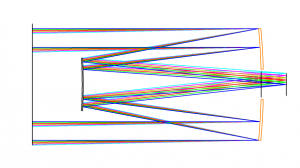
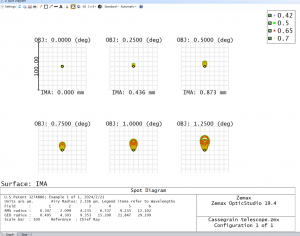
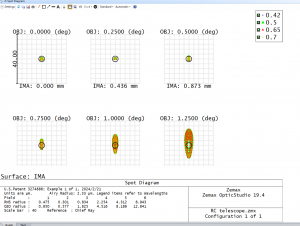
For applications demanding extensive fields of view, supplementary field lenses can augment RC telescope capabilities by rectifying aberrations like field curvature and astigmatism. Incorporating field lenses enhances overall image quality, as evidenced by improved performance across a broader viewing spectrum.
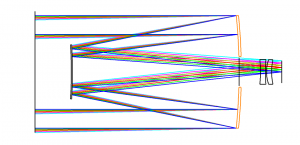
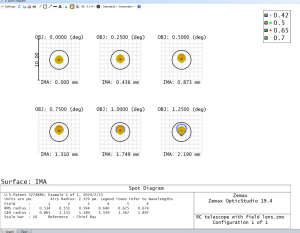
RC telescopes, featuring hyperboloid mirrors for both primary and secondary reflectors, offer distinct advantages within the reflective telescope landscape. With relative apertures typically ranging between F6 and F10, RC telescopes excel in achieving diffraction-limited on-axis image quality while maintaining off-axis fidelity within a given field of view. Moreover, the inclusion of compensating lenses can further enhance image quality across expansive viewing areas.
However, RC telescopes exhibit drawbacks, including energy loss due to structural blackout and susceptibility to large aberrations from eccentricity. Precision installation and maintenance are imperative to mitigate these challenges. Additionally, the fabrication complexity of hyperboloid mirrors contributes to higher production costs compared to spherical or alternative reflective forms.
In conclusion, while the RC telescope presents a blend of advantages and challenges, its significance in specialized fields, particularly astronomical observation, remains paramount.
Contact Shanghai Optics today! We’d be more than happy to discuss your projects and how to best bring them to fruition.